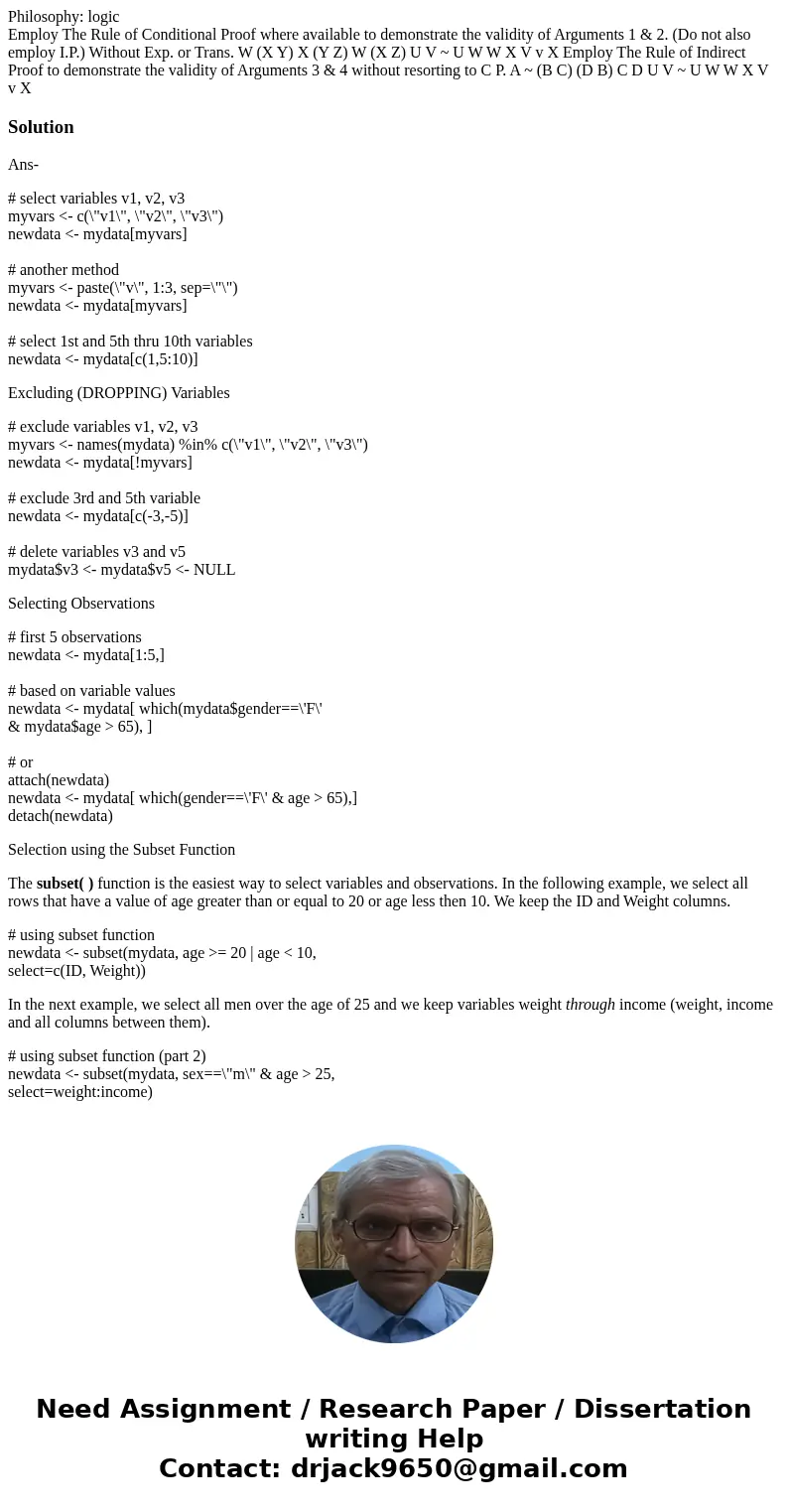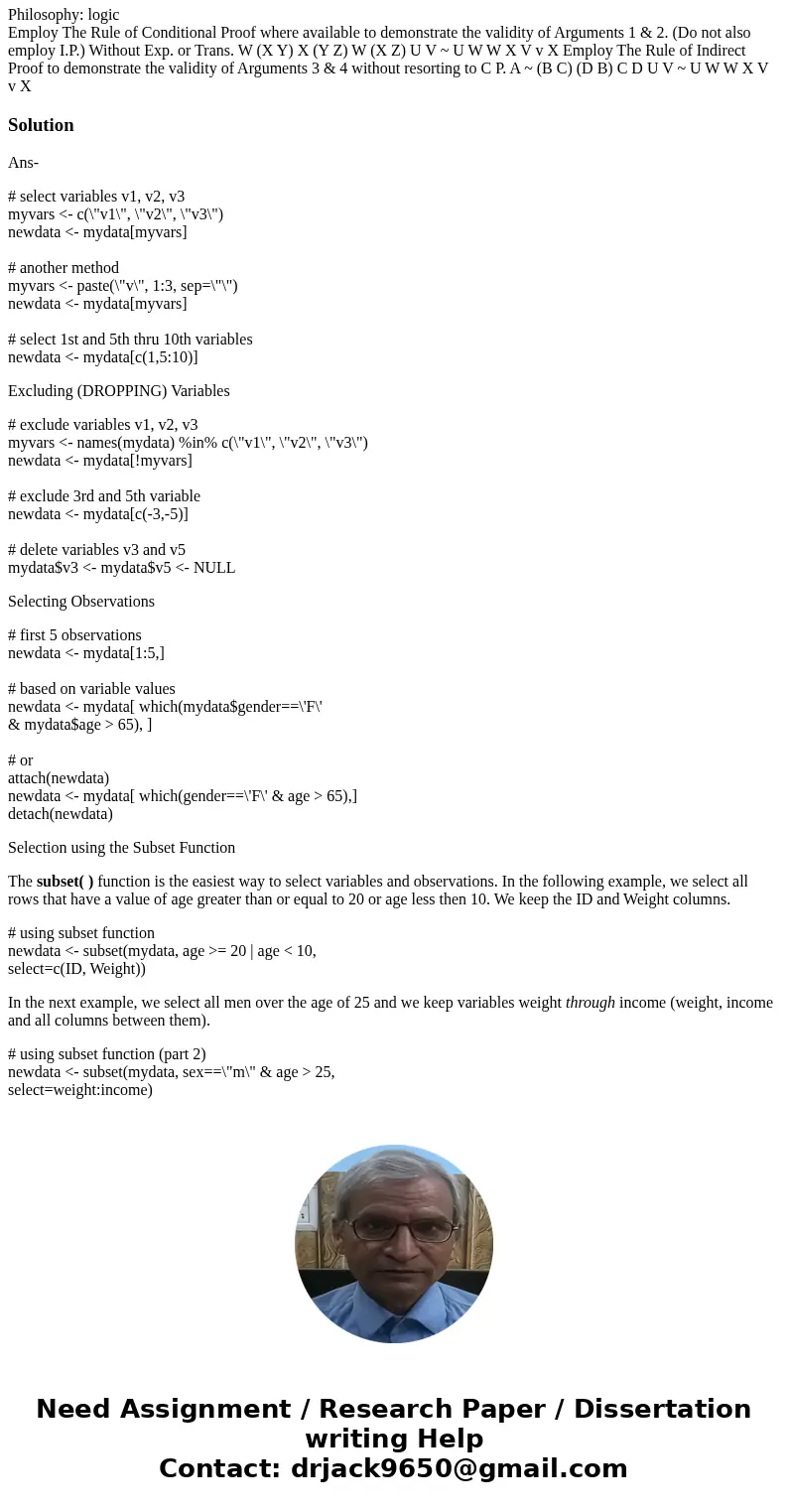Philosophy logic Employ The Rule of Conditional Proof where
Solution
Ans-
# select variables v1, v2, v3
myvars <- c(\"v1\", \"v2\", \"v3\")
newdata <- mydata[myvars]
# another method
myvars <- paste(\"v\", 1:3, sep=\"\")
newdata <- mydata[myvars]
# select 1st and 5th thru 10th variables
newdata <- mydata[c(1,5:10)]
Excluding (DROPPING) Variables
# exclude variables v1, v2, v3
myvars <- names(mydata) %in% c(\"v1\", \"v2\", \"v3\")
newdata <- mydata[!myvars]
# exclude 3rd and 5th variable
newdata <- mydata[c(-3,-5)]
# delete variables v3 and v5
mydata$v3 <- mydata$v5 <- NULL
Selecting Observations
# first 5 observations
newdata <- mydata[1:5,]
# based on variable values
newdata <- mydata[ which(mydata$gender==\'F\'
& mydata$age > 65), ]
# or
attach(newdata)
newdata <- mydata[ which(gender==\'F\' & age > 65),]
detach(newdata)
Selection using the Subset Function
The subset( ) function is the easiest way to select variables and observations. In the following example, we select all rows that have a value of age greater than or equal to 20 or age less then 10. We keep the ID and Weight columns.
# using subset function
newdata <- subset(mydata, age >= 20 | age < 10,
select=c(ID, Weight))
In the next example, we select all men over the age of 25 and we keep variables weight through income (weight, income and all columns between them).
# using subset function (part 2)
newdata <- subset(mydata, sex==\"m\" & age > 25,
select=weight:income)


 Homework Sourse
Homework Sourse